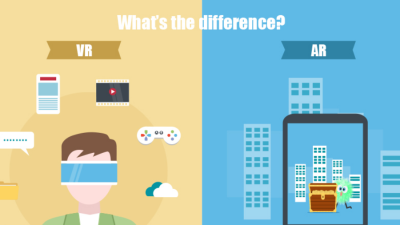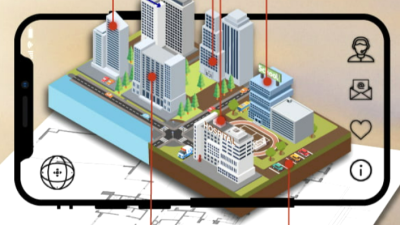The story of augmented reality’s invention doesn’t follow a straightforward path with a single eureka moment. Rather, it represents an evolutionary journey spanning decades, driven by visionaries who gradually built upon each other’s breakthroughs. This technological marvel that now powers everything from smartphone games to industrial applications emerged through persistent innovation and imaginative thinking about human-computer interaction.
The conceptual foundation of augmented reality traces back to the 1960s, a time when computers still occupied entire rooms. During this era of technological limitation, a handful of forward-thinking individuals began contemplating how digital information might someday blend with our perception of physical reality.
Ivan Sutherland: The Father of Augmented Reality
Most historians and technology experts credit Ivan Sutherland with creating the first true augmented reality system. In 1968, while working at Harvard University, Sutherland developed what he called the “Sword of Damocles” – a head-mounted display system that overlaid simple wireframe graphics onto the user’s view of the real world.
The system earned its ominous nickname because it required such heavy equipment that it had to be suspended from the ceiling above the user. Despite its primitive graphics and cumbersome nature, Sutherland’s invention represented a revolutionary breakthrough. For the first time, someone had created a functional system that combined computer-generated information with the physical environment in real-time.
Sutherland’s vision extended far beyond what technology could accomplish at the time. In his seminal 1965 paper “The Ultimate Display,” he described a concept remarkably similar to what we now know as mixed reality: “a room within which the computer can control the existence of matter.” This prescient description came decades before the necessary technology would exist to realize such experiences.
Myron Krueger: Interactive Environments
While Sutherland focused on wearable technology, artist and computer scientist Myron Krueger approached augmented reality from a different angle. Throughout the 1970s, Krueger developed what he termed “artificial reality” – responsive environments where projectors and camera systems allowed participants to interact with computer-generated imagery without wearable devices.
Krueger’s most famous creation, “Videoplace,” allowed users to see silhouettes of themselves interacting with virtual objects and creatures. This installation demonstrated many concepts central to modern AR, particularly the idea that digital elements could respond meaningfully to human movements and gestures.
The Term “Augmented Reality” Emerges
Though the technology had been developing for years, the actual term “augmented reality” wasn’t coined until 1990. Two Boeing researchers, Tom Caudell and David Mizell, introduced the phrase while developing a system to help workers assemble complex aircraft wiring harnesses. Their system projected digital diagrams onto specially equipped displays, showing workers exactly where each wire should be placed.
This practical application highlighted AR’s potential beyond experimental laboratories. By augmenting workers’ vision with crucial information, Boeing hoped to improve efficiency and reduce errors in manufacturing – early evidence of AR’s industrial potential that continues to be explored today.
Mobile AR Foundations: KARMA and NaviCam
The early 1990s saw significant progress toward more portable AR systems. At Columbia University, Steven Feiner, Blair MacIntyre, and Doree Seligmann developed the Knowledge-based Augmented Reality for Maintenance Assistance (KARMA) system. This pioneering project used a see-through head-mounted display to show maintenance instructions for a laser printer, effectively demonstrating how AR could provide just-in-time visual guidance for complex tasks.
Around the same time, Jun Rekimoto at Sony Computer Science Laboratories created NaviCam, one of the first handheld AR systems. NaviCam used a portable display with an attached camera to recognize objects and overlay relevant information. This represented an important step toward the smartphone-based AR experiences that would become ubiquitous decades later.
ARToolKit: Democratizing Development
A critical milestone in augmented reality’s evolution came in 1999 when Hirokazu Kato released ARToolKit, an open-source software library for creating AR applications. This technology solved several fundamental challenges, particularly the complex problem of tracking the user’s viewpoint to align virtual objects with the real world.
ARToolKit’s accessibility accelerated innovation by allowing developers worldwide to experiment with AR without building tracking systems from scratch. As noted in a comprehensive history of AR development, this democratization of AR technology drove rapid advancement in the field throughout the early 2000s.
From Research to Consumer Products
The journey from research labs to consumer products took decades. In 2008, Wikitude launched one of the first AR mobile applications, providing location-based information overlays through smartphone cameras. This period marked AR’s transition from specialized equipment to software running on devices millions already owned.
The launch of development platforms like ARCore by Google and ARKit by Apple in 2017 represented another watershed moment. These software frameworks simplified the creation of sophisticated AR experiences for mainstream mobile devices, empowering developers to build applications reaching unprecedented audiences. As we’ve previously explored in our analysis of marketing technology trends, these platforms fundamentally changed how brands could engage consumers.
Beyond Traditional Definitions
While tracing AR’s origin story, it’s worth acknowledging visionaries who worked on related concepts that expanded our understanding of mixed reality. Jaron Lanier, who popularized the term “virtual reality” in the 1980s, explored the spectrum between physical and digital worlds. His work at VPL Research developed many fundamental technologies later incorporated into AR systems.
Similarly, researchers at the University of Toronto’s Telepresence Project in the 1990s explored remote collaboration using augmented spaces, advancing concepts of how digital information could meaningfully integrate with physical environments for practical applications.
The Military Connection
Parallel to civilian research, military organizations significantly advanced augmented reality technology. The U.S. Air Force’s Super Cockpit program in the 1980s developed heads-up displays for fighter pilots that overlaid critical flight information onto their view of the real world. This work, led by Thomas Furness, pushed the boundaries of what was technically possible and established many principles still used in modern AR systems.
These military applications highlighted AR’s potential for improving situational awareness in high-stakes environments – demonstrating benefits beyond entertainment that continue to drive development today.
AR’s Continuous Evolution
Augmented reality wasn’t invented in a flash of inspiration but evolved through countless innovations across decades. From Sutherland’s ceiling-mounted contraption to sophisticated applications running on everyday smartphones, each development built upon previous work while opening new possibilities.
Today’s AR experiences – whether they’re helping surgeons visualize anatomy during operations, enabling remote experts to guide field technicians, or simply entertaining us with playful camera filters – represent the culmination of this long innovative journey. And this evolution continues as researchers explore new interface paradigms, more natural integration with our environments, and increasingly sophisticated understanding of the physical world.
Conclusion
The invention of augmented reality cannot be credited to a single person or moment. Instead, it emerged through a rich tapestry of contributions from researchers, artists, engineers, and entrepreneurs who shared a vision of harmoniously blending digital information with our physical reality. From Sutherland’s pioneering head-mounted display to modern smartphone applications used by millions daily, AR’s development illustrates how transformative technologies often evolve gradually through persistent effort and imagination.
As we look to the future, the boundaries between physical and digital experiences continue to blur. The visionaries who laid AR’s foundation might be amazed to see how their early concepts have developed into technologies that increasingly feel less like separate tools and more like natural extensions of human perception. Their pioneering spirit lives on in today’s innovators who continue pushing the boundaries of what’s possible at the intersection of digital and physical worlds.





